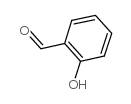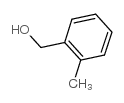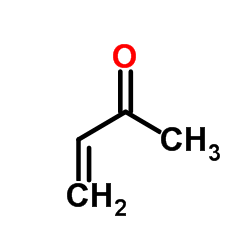51593-69-2
| Name | 2H-Chromene-3-carbaldehyde |
|---|---|
| Synonyms |
2h-chromene-3-carbaldehyde
MFCD01662414 |
| Density | 1.28g/cm3 |
|---|---|
| Boiling Point | 106 °C |
| Melting Point | 170-174 °C |
| Molecular Formula | C10H8O2 |
| Molecular Weight | 160.16900 |
| Flash Point | 145.387ºC |
| Exact Mass | 160.05200 |
| PSA | 26.30000 |
| LogP | 1.66130 |
| Index of Refraction | 1.661 |
| Storage condition | 2-8°C |
Synonym: Section 2 - COMPOSITION, INFORMATION ON INGREDIENTS
Risk Phrases: 36/37/38 Section 3 - HAZARDS IDENTIFICATION EMERGENCY OVERVIEW
Irritating to eyes, respiratory system and skin. Potential Health Effects Eye: Causes eye irritation. Skin: Causes skin irritation. May be harmful if absorbed through the skin. Ingestion: May cause irritation of the digestive tract. May be harmful if swallowed. Inhalation: Causes respiratory tract irritation. May be harmful if inhaled. Chronic: Not available. Section 4 - FIRST AID MEASURES Eyes: Flush eyes with plenty of water for at least 15 minutes, occasionally lifting the upper and lower eyelids. Get medical aid. Skin: Get medical aid. Flush skin with plenty of water for at least 15 minutes while removing contaminated clothing and shoes. Ingestion: Get medical aid. Wash mouth out with water. Inhalation: Remove from exposure and move to fresh air immediately. If not breathing, give artificial respiration. If breathing is difficult, give oxygen. Get medical aid. Notes to Physician: Treat symptomatically and supportively. Section 5 - FIRE FIGHTING MEASURES General Information: As in any fire, wear a self-contained breathing apparatus in pressure-demand, MSHA/NIOSH (approved or equivalent), and full protective gear. Extinguishing Media: Use water spray, dry chemical, carbon dioxide, or chemical foam. Section 6 - ACCIDENTAL RELEASE MEASURES General Information: Use proper personal protective equipment as indicated in Section 8. Spills/Leaks: Vacuum or sweep up material and place into a suitable disposal container. Section 7 - HANDLING and STORAGE Handling: Avoid breathing dust, vapor, mist, or gas. Avoid contact with skin and eyes. Storage: Store in a cool, dry place. Store in a tightly closed container. Store under an inert atmosphere. Section 8 - EXPOSURE CONTROLS, PERSONAL PROTECTION Engineering Controls: Facilities storing or utilizing this material should be equipped with an eyewash facility and a safety shower. Use adequate ventilation to keep airborne concentrations low. Exposure Limits CAS# 51593-69-2: Personal Protective Equipment Eyes: Not available. Skin: Wear appropriate protective gloves to prevent skin exposure. Clothing: Wear appropriate protective clothing to prevent skin exposure. Respirators: Follow the OSHA respirator regulations found in 29 CFR 1910.134 or European Standard EN 149. Use a NIOSH/MSHA or European Standard EN 149 approved respirator if exposure limits are exceeded or if irritation or other symptoms are experienced. Section 9 - PHYSICAL AND CHEMICAL PROPERTIES Physical State: Solid Color: pale yellow Odor: Not available. pH: Not available. Vapor Pressure: Not available. Viscosity: Not available. Boiling Point: 104 - 106 deg C @0.4mmHg Freezing/Melting Point: Not available. Autoignition Temperature: Not available. Flash Point: Not available. Explosion Limits, lower: Not available. Explosion Limits, upper: Not available. Decomposition Temperature: Solubility in water: Specific Gravity/Density: Molecular Formula: C10H8O2 Molecular Weight: 160.17 Section 10 - STABILITY AND REACTIVITY Chemical Stability: Not available. Conditions to Avoid: Incompatible materials. Incompatibilities with Other Materials: Oxidizing agents, reducing agents. Hazardous Decomposition Products: Carbon monoxide, carbon dioxide, acrid smoke and fumes. Hazardous Polymerization: Has not been reported Section 11 - TOXICOLOGICAL INFORMATION RTECS#: CAS# 51593-69-2: DJ2220000 LD50/LC50: Not available. Carcinogenicity: 2H-Chromene-3-carbaldehyde - Not listed by ACGIH, IARC, or NTP. Other: See actual entry in RTECS for complete information. Section 12 - ECOLOGICAL INFORMATION Section 13 - DISPOSAL CONSIDERATIONS Dispose of in a manner consistent with federal, state, and local regulations. Section 14 - TRANSPORT INFORMATION IATA No information available. IMO No information available. RID/ADR No information available. Section 15 - REGULATORY INFORMATION European/International Regulations European Labeling in Accordance with EC Directives Hazard Symbols: XI Risk Phrases: R 36/37/38 Irritating to eyes, respiratory system and skin. Safety Phrases: S 26 In case of contact with eyes, rinse immediately with plenty of water and seek medical advice. S 37/39 Wear suitable gloves and eye/face protection. WGK (Water Danger/Protection) CAS# 51593-69-2: No information available. Canada None of the chemicals in this product are listed on the DSL/NDSL list. CAS# 51593-69-2 is not listed on Canada's Ingredient Disclosure List. US FEDERAL TSCA CAS# 51593-69-2 is not listed on the TSCA inventory. It is for research and development use only. SECTION 16 - ADDITIONAL INFORMATION N/A |
CHEMICAL IDENTIFICATION
HEALTH HAZARD DATAACUTE TOXICITY DATA
|
| Hazard Codes | Xi |
|---|---|
| Risk Phrases | R36 |
| Safety Phrases | S26 |
| WGK Germany | 3 |
| RTECS | DJ2220000 |
| HS Code | 2912190090 |
|
~90% 
51593-69-2 |
| Literature: NEUROCRINE BIOSCIENCES, INC. Patent: US2006/276454 A1, 2006 ; Location in patent: Page/Page column 26 ; US 20060276454 A1 |
|
~73% 
51593-69-2 |
| Literature: Ravichandran Synthetic Communications, 2001 , vol. 31, # 8 p. 1233 - 1235 |
|
~92% 
51593-69-2 |
| Literature: Brenna, Elisabetta; Gatti, Francesco G.; Malpezzi, Luciana; Monti, Daniela; Parmeggiani, Fabio; Sacchetti, Alessandro Journal of Organic Chemistry, 2013 , vol. 78, # 10 p. 4811 - 4822 |
|
~% 
51593-69-2 |
| Literature: Kumari, Kumkum; Raghuvanshi, Dushyant Singh; Singh, Krishna Nand Tetrahedron, 2013 , vol. 69, # 1 p. 82 - 88 |
|
~% 
51593-69-2 |
| Literature: Kumari, Kumkum; Raghuvanshi, Dushyant Singh; Singh, Krishna Nand Tetrahedron, 2013 , vol. 69, # 1 p. 82 - 88 |
| Precursor 5 | |
|---|---|
| DownStream 4 | |
| HS Code | 2912190090 |
|---|---|
| Summary | 2912190090 acyclic aldehydes without other oxygen function。Supervision conditions:None。VAT:17.0%。Tax rebate rate:9.0%。MFN tariff:5.5%。General tariff:30.0% |








